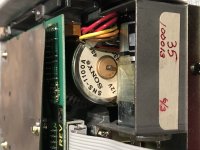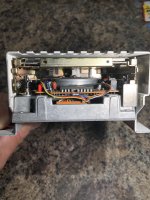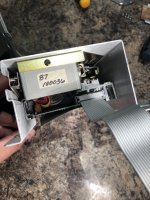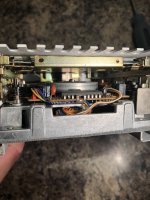@North Hedge Ned I've seen Twiggy prototypes that have your front plate, but they cut away at the plastic so the floppy would fit. So even the Twiggy Protos occasionally had the 3.5" faceplate. They were obviously trying all sorts of different things. Just because yours has the 3.5", doesn't mean it wasn't around the same time as the Twiggy. You could argue that it was after Twiggy development, but the afore mentioned cut-away Twiggy would indicate otherwise. Obviously some simultaneous development going on.
Certainly after the Disk ][ prototype, but could be concurrent with Twiggy. Only person who would really know would be an Apple engineer.
Might be worth contacting the Vintage Computer Museum in Mountain View, California, USA. They might actually have someone on staff who could tell you.
Provenance is one of the most important thing about these old machines.







